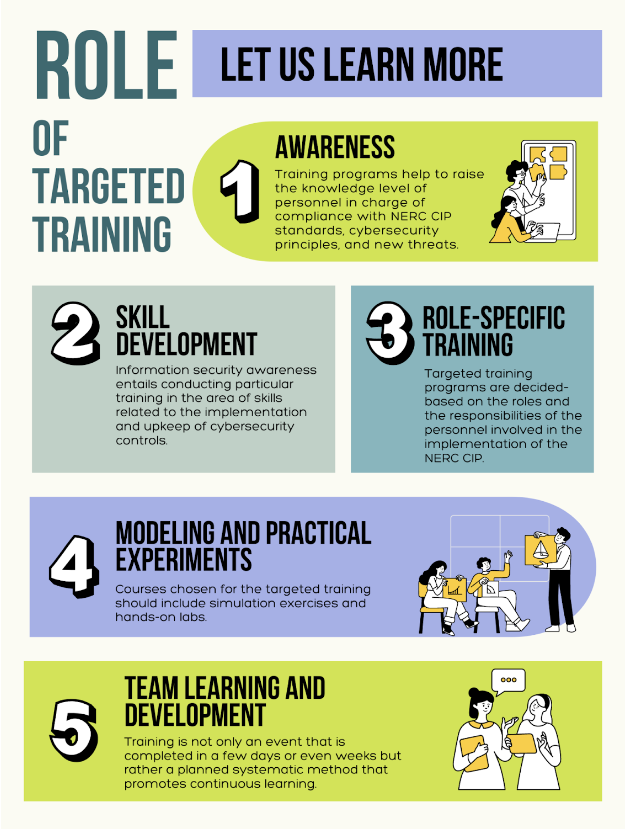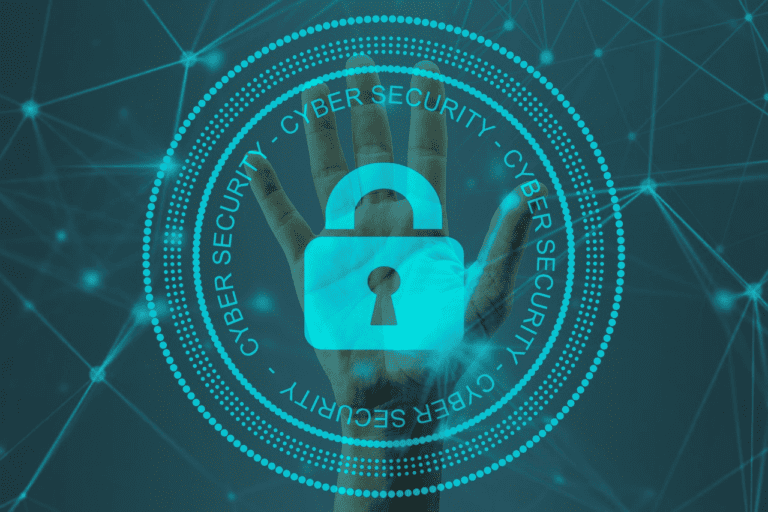Enhancing NERC CIP Compliance with Targeted Training
NERC CIP standards for Critical Infrastructure Protection serve as a vital tool in enhancing the reliability and security of the North American bulk power system. The compliance standards listed in the following table aim to safeguard critical assets and infrastructure while minimizing the probability of cyberattacks on essential systems. However, the operations associated with NERC CIP standards required for electricity companies and other regulated organizations have limitations. A particularly useful approach involves developing training programs that are focused on specific functions related to the implementation of these practices.
Significance of NERC CIP Liability
Before reflecting on the meaning of targeted training, there is a need to describe how many and what nerc cip means within the context of the electric utility field. The regulations and business practices that the NERC CIP standards cover are generally those that include cybersecurity risks and cybersecurity vulnerabilities to the bulk power system’s reliability and security. Ensuring conformity with these standards is compulsory for players in the energy systems that are responsible for critical assets, such as power generation plants, transmission substations, and control centers. Non-compliant employees face hefty fines and reputational risks, but more significantly, they become more susceptible to cyberattacks.
Obstacles in NERC CIP Conformity
Though the CIP standards are considered to be critical standards for electric utilities, several factors impede the enforcement and maintenance of NERC CIP compliance. Challenges that IT companies face in the current economy include cybersecurity issues, regulatory environments, workforce constraints, and resource limitations, among others. Furthermore, personnel in charge of enforcing NERC CIP may not have the right knowledge, skills, or awareness to mitigate and prevent potential cybersecurity risks.
Role of Targeted Training in Enhancing Compliance
The use of specific training techniques is also essential in helping address concerns related to NERC CIP compliance. The topic of cybersecurity education is an important component in the field of electric utility security, as specific training can provide electric utilities with the necessary knowledge, skills, and awareness for implementing compliance processes and enhancing the overall cybersecurity of electric utilities effectively. The following are key ways in which targeted training contributes to enhancing NERC CIP compliance:
1. Awareness and Understanding
Tailored training programs help to raise the knowledge level of personnel in charge of compliance with NERC CIP standards, cybersecurity principles, and new threats. The training programs educate the employees on the significance of compliance and the repercussions of in-compliance with the cybersecurity policy that spells out the organizational culture.
2. Skill Development
Information security awareness entails conducting particular training in the area of skills related to the implementation and upkeep of cybersecurity controls. Some examples would be to focus on specific sections of the CIP standards such as network security, access control, incident response, and vulnerability management, and give personnel the knowledge and expertise necessary to address CIP requirements.
3. Role-Specific Training
Targeted training programs are decided–based on the roles and the responsibilities of the personnel involved in the implementation of the NERC CIP. Various training materials are prepared for different functional levels, such as system administrators, cybersecurity analysts, compliance officers, and so on, to meet the specific needs of individual participants.
4. Modeling and Practical Experiments
Courses chosen for targeted training should include simulation exercises and hands-on labs to offer practical experience in understanding the implementation of controls in the cybersecurity environment. Training is conducted by implementing practice cyber incidents and cyber threats as close to field conditions as possible to encourage participants to gain practical cybersecurity skills and develop confidence in their cybersecurity capabilities.
5. Team Learning and Development
Training is not only an event that is completed in a few days or even weeks but rather a planned systematic method that promotes continuous learning. Training is conducted periodically to update personnel on the latest trends in cybersecurity, evolving legislation, and safety protocols.
Facilitative Elements of a Training Process
An effective targeted training program for enhancing NERC CIP compliance should include the following key component
1. Needs Assessment
There are four main steps to a needs analysis before designing a training program: identify the knowledge gaps, identify the skill gaps, identify the training needs, and identify personnel involved in complying with NERC CIP.
2. Customization
Design both content and learning strategies around the learners’ characteristics. Tailoring a program is crucial as it translates into training that will be relevant and engaging, target a compliance issue, and be effective.
3. Engagement and Interactivity
Encourage trainees to focus their attention and participate in learning activities like case studies, group discussions, role-playing, and or practical labs. The trainees will be able to retain knowledge and learn new skills through interactive training.
4. Measurement and Evaluation
Put in place methods of assessing the quality of delivered training and evaluating learning results. Formal tests, quizzes, and performance appraisals help in reviewing the success of the training programs and the areas where they need modification and adjustments.
5. Continuous Improvement
Revisit and revise training curricula to include emerging regulatory requirements, new or changing cyber security threats, and other industry best practices. It would also be important to continue to seek the views of training participants to ensure that training is relevant to them and that it makes a difference.
NERC CIP Training Topics
| Topic | Description | Importance |
| NERC CIP Requirements | Overview of NERC CIP standards. | Ensures regulatory compliance and infrastructure protection. |
| Cybersecurity Best Practices | Discussion of security methodologies. | Enhances cybersecurity posture and risk mitigation. |
| Threat Intelligence | Analysis of cyber threats. | Enables proactive threat response and vulnerability management. |
Conclusion
The fact that training is targeted is also important for increasing NERC CIP implementation of electric utilities by filling in the knowledge gaps, and skill gaps and ensuring that a good culture of addressing cybersecurity through courses is also achieved. Targeted training is also an important factor in ensuring that organizations improve their cybersecurity posture and reduce the cyber risks to the bulk power system as they educate personnel to gain the knowledge, skills, and awareness required to execute cybersecurity measures effectively. To continue providing protection against cyber threats and achieving successful NERC CIP compliance, strategic training for the targeted training remains relevant and necessary.
FAQs
-
What is the NERC CIP?
CIP standard compliance is the process of meeting the regulatory requirements of the North American Electric Reliability Corporation’s CIP standards about cybersecurity for the power industry infrastructure.
-
Why is NERC CIP compliance beneficial?
NERC CIP is necessary to protect the reliability of the bulk power system; to reduce the occurrence of cyber threats, and to keep systems online.
-
How is focused training for NERC CIP compliance?
Since targeted training involves training personnel who are required to comply with the NERC CIP regulations regarding cybersecurity, it focuses on the issues related to their precise roles and duties.








